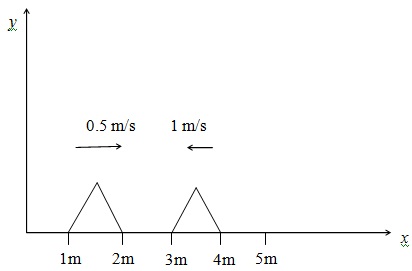Assignment:
Problems:
1. You just received a balloon!! It has a volume of 0.005 m3, and the latex body of the balloon has a mass of 5g. It is filled with helium (density 0.18 kg/m3). The density of air is 1.29 kg/m3. You hold a string attached to the balloon to keep it from floating away.
a. What is the tension in the string?
b. You decide to try for a Darwin Award by tying many balloons to a lawn-chair so that you can hover in the air. If the combined mass of you and the lawn-chair is 75kg, how many balloons will you need?
2. After a tasty Thanksgiving dinner, you are washing the dishes. You turn on the faucet and are captivated by the shape of the water stream; in particular, you notice that the stream tapers as it falls. What physics equation explains this?
3. At the Springfield Nuclear Plant, Homer Simpson watches water flow through a pipe with an initial radius of 0.25m, and a final radius of 1.0m. The water enters the pipe at a speed of 0.4 m/s, with a pressure of 1.01 x 105 N/m2. The pipe curves downward, so that the pipe ends up 5.0 m below its initial height.
a. Draw a sketch of the pipe, and label the radius, height, fluid speed, and pressure at each end.
b. At what speed does water exit the pipe? (The area of a circle is πr2)
c. What is the pressure of the water at the end of the pipe?
4. You are working at Big Pharma, and trying to control the reaction rate for a certain chemical reaction by changing the temperature. You have 2.9kg of a solution (at 300C) and need to decrease the temperature to 230C before beginning the reaction. To do this, you have a hollow plastic ball that you can fill with ice (initially at -100C) and submerge within the solution. How much ice do you need to use? You will need some, though not all, of the numbers below:
Specific heat of solution = 4100 J/kg·0C
Specific heat of ice = 2135 J/kg·0C
Specific heat of water = 4186 J/kg·0C
Latent heat of fusion (H2O) = 3.33 x 105 J/kg
Latent heat of vaporization (H2O) = 2.26 x 106 J/kg
Ignore the specific heat of the plastic ball, as it is negligible.
5. Your ‘buddy' Scooter stole your balloon! The shiny red balloon has an initial volume of 0.005 m3, pressure of 1.01 x 105 N/m2, and temperature of 350C.
a. Scooter runs outside with the balloon, where the temperature is 20C. What is the volume of the balloon? Assume the process is isobaric.
b. What is the work done by the gas during this process?
c. What is the change in thermal energy of the gas?
6. A 0.5-mol sample of argon gas undergoes an isothermal process.
a. If the gas did 200J of work, how much energy was added/subtracted by heating/cooling?
b. The initial pressure is 1.5x105 Pa, and the initial volume is 0.2m3. The final pressure is 1.0x105 Pa. Draw a P-V diagram for this process, including labels for the initial and final volumes of both P and V.
7. You are a roadie (a technical assistant) to legendary punk guitar player Doyle Wolfgang von Frankenstein. During a concert, he breaks the low C string on his guitar. You are asked to restring it. When plucked, it is supposed to have a fundamental frequency of f1 = 131 Hz. When placed on the guitar, the string will have a length of 70cm. The linear mass density of the string is 0.007 kg/m. In order to tune the guitar, the tension in the string is adjusted. What must the tension be?
8. The Chelyabinsk meteor in Feb. 2013 created a sound wave that damaged over 7000 buildings and injured over 1500 people.
a. In a video of the meteor, you find that the meteor flashes directly overhead, and then 70s later the sound wave hits. If sound waves travel at 343 m/s, at what altitude (in meters) did it explode?
b. The sound wave recorded by the video registers at 140dB. Assuming that the sound wave went outward in all directions from the meteor explosion, what was the power rating (i.e., wattage) of the sound wave?
9. You are designing the suspension system for a car. Each shock absorber is a spring that supports 1/4th of the car's mass. The total mass of the car is 1500kg. To pass the standards of contemporary luxury cars, the car have maximum allowable oscillatory acceleration of 2.0m/s2 when hitting a bump that is 0.1m high.
a. What is the maximum allowable frequency of oscillation?
b. What is the minimum allowable period of oscillation?
c. What is the maximum allowable spring constant for a shock absorber?
10. Below is a snapshot graph, when t = 0s, of two identical (the picture isn't perfect) wave pulses travelling along a string in opposite directions, and at different speeds.

a. Draw a snapshot graph when t = 1s.
b. Draw a history graph for the point x = 3m for the time interval from 0s to 5s.